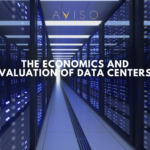
A data center is a physical facility or space where organizations house critical applications and data. These centers are designed to carry and store a network of computing and storage resources, enabling the delivery of shared applications and data. Key components of a data center include routers, switches, firewalls, storage systems, servers, and application-delivery controllers. Perhaps it is easier to understand a data center when it is seen as a building-sized computer. Large banks of servers can be seen as the hard drive, the power is provided by generator sets and electric substations, and PC fans are represented by factory-sized fans and liquid cooling system. Meanwhile, racks of data servers are managed from individual control rooms of data center tenants.
In recent years, data centers have emerged as a crucial sector in the Philippine real estate market. Data centers have cropped-up all over the country, mostly in the Metro Manila area.
Philippine Data Center Market
|
Location |
Data Center Status | ||
| Operating | Under Development |
Land Banked |
|
| Metro Manila | 23 | 11 | 13 |
| Central Luzon & Baguio | 2 | 5 | 8 |
| Southern Luzon | 1 | 2 | 2 |
| Cebu | 3 | 1 | 1 |
| Davao | 2 | – | 3 |
Note: As of May, 2024
Global demand for faster internet and improved digital services requires ever more data center built-out capacity. The Philippines, as the second-largest subscriber base in Southeast Asia, has become an attractive location for data center investments. Despite the challenges posed by the pandemic, the Philippines experienced one of the highest growth rates among emerging data center markets in the region. Alongside Malaysia and Thailand, it is poised to become a major data center hub in Southeast Asia.
Investors are thus increasingly drawn to data centers as a promising asset type. The pandemic prompted local investors to consider industrial real estate, including data centers and telecommunication projects. The decentralization of investment portfolios has fueled this interest, with data centers emerging as one of the main economic drivers in the industrial real estate sector.
Several factors contribute to the growing demand for data centers in the Philippines. Cloud-based services has surged during lockdowns, supporting remote work and flexible arrangements. This trend drove the need for robust data center infrastructure to handle heavier data loads and accommodate more users.
Moreover, with accelerated globalization and the expansion of enterprises, international data center locators are increasingly exploring the Philippines. The country’s strategic location in Southeast Asia makes it an ideal choice for hosting data and technology-driven tenant companies. As a result of projected demand, new supply is expected to play catch-up for the next 4 years. It is postulated that new areas of demand such as artificial intelligence and quantum computing will further boost demand for data centers in the medium to long-term.
In general, there are two types of data center tenants -companies that lease server capacity to store data. The first are enterprise locators, which are individual companies or government agencies. Examples are companies such as fast food, retail chains or local banks. In the other extreme are hyperscaler locators, which are companies that manage ever expanding data at a volume several factors higher than enterprise locators. Examples of such companies include Amazon, Microsoft, and Netflix. Data centers often host a mixture of both types of tenants (colocation) although some specialize in only one type(dedicated).
Valuation of Data Center Real Estate
Unlike other real estate developments such as malls, office buildings or residential condominiums, the basic measurement for value of data centers is electrical power rather than area. Kilowatts measure a data center’s critical capacity for standard racks and servers that, in turn, determine the volume of data that can be hosted. Kilowatts therefore serve as units of value for data centers much like square meters for regular real estate developments.
Because data centers have unique builds that cater to locators they host, or perhaps due to the relative newness of the industry, data centers do not have standard capacities and designs. Therefore, it is difficult to find relevant comparable data centers in each market. Data centers do generate substantial income and easily lend themselves to valuation via the income approach framework using the discounted cash flows methodology.
Under the DCF method, data center cash flows are projected over an explicit forecast period and a continuing value (to reflect its going concern status). These future annuities are discounted to present value using a discount rate, estimated using a weighted cost of capital or compound risk or return model, to arrive at a business enterprise value.
The table below shows a basic DCF model at the EBITDA level of cash flows, using Kilowatt Hours as the starting point to determine total leasable capacity. Note that the table is for illustrative purposes only. Aviso uses a proprietary methodology centered on standard racks capacity with projections at the free cash flows basis to arrive at a more precise opinion of value of data centers.
The next table below uses the traditional land-as-residual income approach to land valuation, subtracting developer’s profit margin (CREBA-based developers use 20%, which is near PSE-listed real estate developers’ long-term average margins) to arrive at a per square meter value for data center land.
The applied discount rate was derived via WACC at around 8%. Looking at the returns on real estate investment trusts suggest a hurdle rate comparable to the upper end yield of listed REITS such as Double Dragon and MegaWorld, both of which exceed 8%.
Indicative Hurdle Rates
| Real Estate Investment Trust Corp. | Dividend Yield |
| Ayala REIT (AREIT) |
5.30% |
| Double Dragon Properties (DDMPR) |
8.70% |
| MegaWorld Reit (MREIT) |
8.10% |
| Vista Land REIT (VREIT) |
5.30% |
| Average |
6.85% |
Despite very positive valuations on the rise, the growing data center market faces several challenges moving forward. First is the surprising scarcity of real estate that can qualify for data center development. Tier-3 data centers, due to the nature of data hosting operations, have strict requirements such as access to large (megawatts) amounts of continuous power, access to high bandwidth (5G) and geohazard-free conditions.
Edge data centers may also increase in efficiency and render large hyperscaler data centers obsolete. Edge data centers are smaller, modular data centers that can be as small as container vans scattered in a large region. They do not require large properties and can operate from spare, marginal spaces in existing office or commercial or industrial spaces.
However, the consensus among technocrats and financiers is that large box data centers are the way to go for the foreseeable future.
Insiders predict that data centers will drive more movement in the real estate market. Data centers are expected to overtake other assets as key drivers in industrial real estate and the Philippines is fast-becoming a major player in the global data center scene.
Sources: Data for this article was researched from market reports authored by Structured Research, Inc and Research and Markets.com. In addition, Aviso clients from the ICT and IPBAP were interviewed for insights and their opinions on future trends.
Written By: Roque M. Sorioso, Jr.
Aviso Valuation and Advisory Corp. is a real estate consultancy firm that offers valuation and business advisory services that are compliant with international standards such as the International Valuation Standards (IVS) and International Financial Reporting Standards (IFRS). To assure that we only produce high-quality deliverables, as needed, we do tasks beyond the usual appraisal process like verifying pertinent property documents (i.e. land titles, tax declarations, etc.) with the appropriate government agencies for due diligence purposes prior to the acquisition of the properties.














